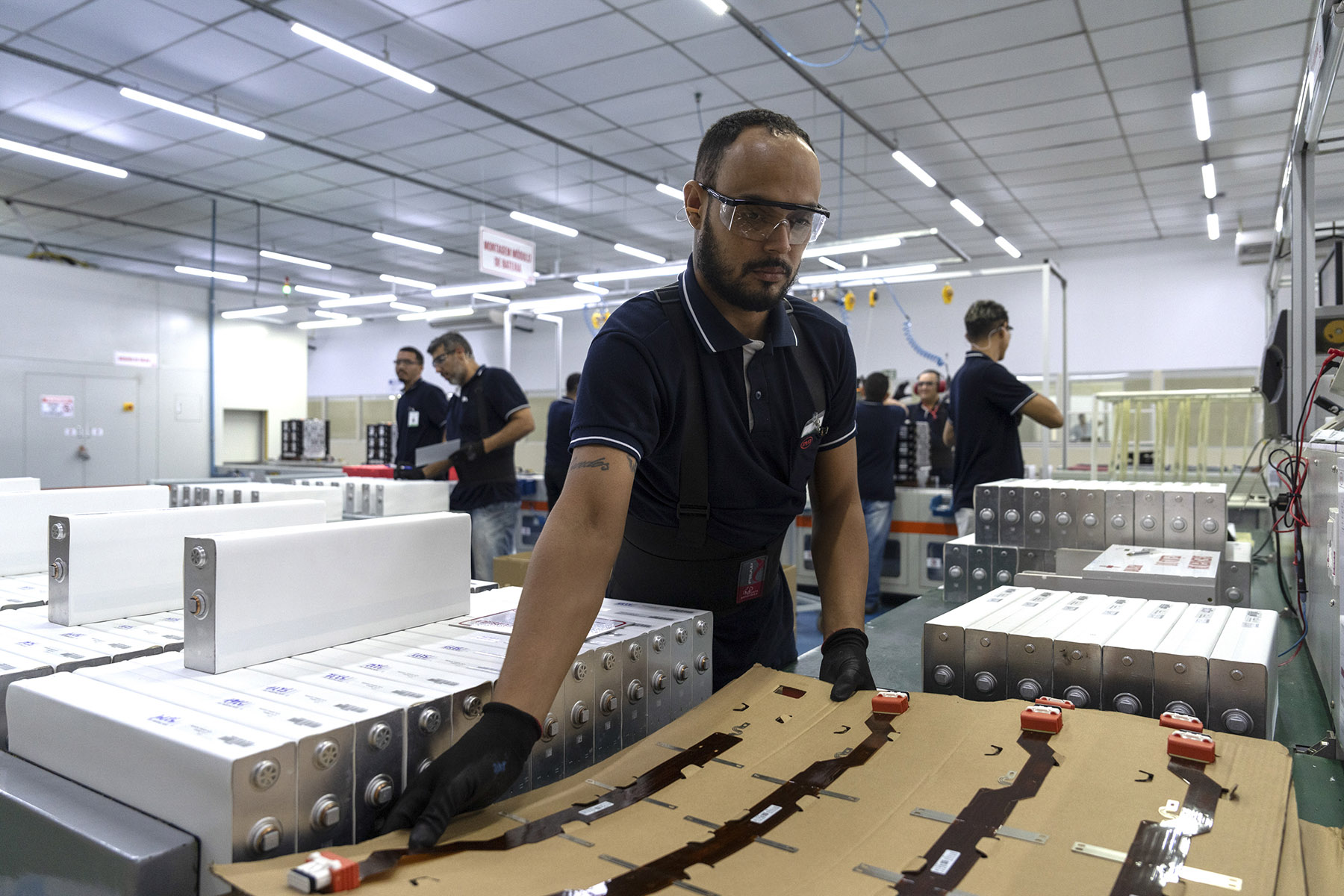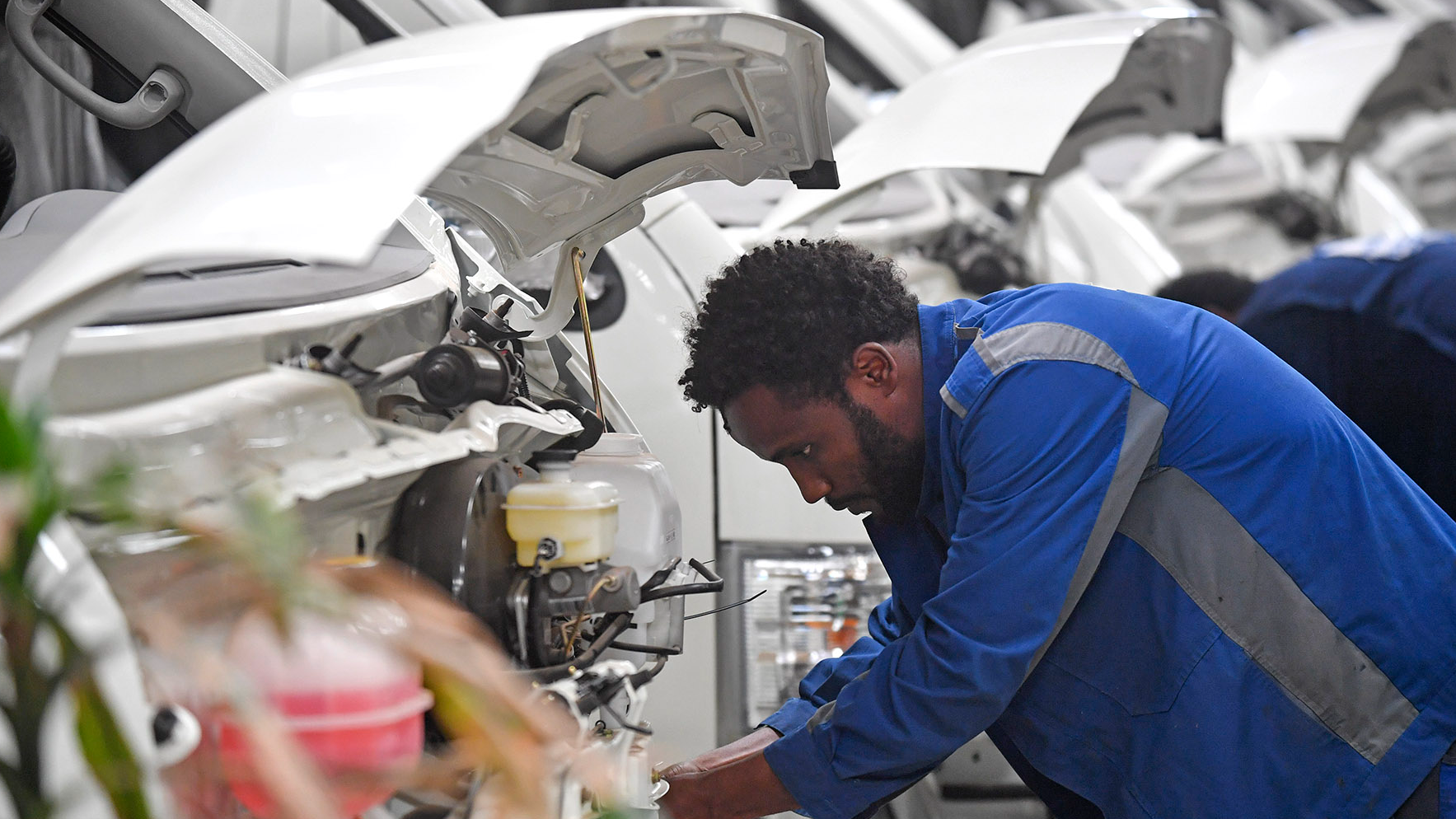As firms step up overseas forays, products, services, tech innovation make big difference to BRI, RCEP economies

What could be the next growth opportunity for Chinese companies? For many, the answer is operating overseas.
There was a time when Chinese companies operating overseas focused on building roads, ports and bridges. This was followed by forays into textiles, cement, food processing and power generation.
Today, Chinese firms, especially those engaged in sectors like high-end manufacturing and trade-in services, are adapting their strategies to better align with the changing global market environment.
For instance, Chinese automaker BYD will invest around $1 billion to build a plant in Turkiye, according to information released by the Turkish Ministry of Industry and Technology in early July.
With an annual capacity of 150,000 vehicles as well as armed with a research and development center, the factory will be operational in late 2026. It will create as many as 5,000 jobs in Turkiye, which is in a Customs union with the European Union. This allows vehicles to be exported to the bloc without tariffs.
JinkoSolar Holding Co Ltd, a Chinese solar panel producer with 14 production bases across the world, also announced in mid-July that it will form a joint venture in Saudi Arabia with local partners.
The joint venture will build and operate a high-efficiency solar cell and solar module factory in the kingdom. The manufacturing facility is expected to have a total investment of $1 billion.
“This move will further help us optimize our global manufacturing and marketing infrastructure, as well as enhance our competitiveness,” said Li Xiande, JinkoSolar’s chairman and CEO.
Over the past five years, with the global landscape evolving rapidly, Chinese businesses’ pace of going global has notably accelerated, especially at private companies, said Edward Au, southern region managing partner at Deloitte China.
Owing to their superior technological advantages, strong brand equity and high cost barriers, a large number of Chinese companies have expanded internationally, according to a white paper recently released by Deloitte China and several partners.
Similar views were shared by Ye Dingda, chief economist of the Beijing-based China Machinery Industry Federation. “Facing fierce competition from their foreign and domestic rivals within China, many Chinese companies’ focus on international expansion is becoming a common theme as they seek to tap new opportunities and diversify their revenue streams outside China,” said Ye.
By leveraging their competitive advantages and exploring untapped markets, Chinese firms are positioning themselves as key players on the global stage, driving growth through strategic investments and partnerships abroad, he said.
Chinese nonfinancial outbound direct investment (ODI) soared 16.6 percent year-on-year to $72.62 billion in the first half of 2024, Commerce Ministry data showed.

Cooperation under the Belt and Road Initiative framework gained steam as Chinese ODI in countries and regions participating in the BRI surged 9.2 percent year-on-year to $15.46 billion.
Amid rising protectionism and geopolitical tensions, a growing number of Chinese companies have been keen to allocate more resources and manpower to develop markets involved in the BRI.
For them, the BRI landscape represents new growth points that can mitigate operational risks and ensure long-term growth, said Liang Ming, director of the Institute of International Trade, which is part of the Chinese Academy of International Trade and Economic Cooperation in Beijing.
KTK Group Co, a manufacturer of industrial equipment and electronic products based in Changzhou, Jiangsu province, has further expanded its sales and service networks in regions such as Central Asia, South Asia and the Middle East, while its business operations in the United States market have been restricted by the US Department of Commerce since 2020.
Gao Feng, the company’s vice-president, said KTK Group has received orders worth over 100 million yuan ($13.97 million) in these regions in recent years.
The group’s overseas business focuses primarily on supplying components for high-speed trains, intercity trains and subway carriages.
These mainly include equipment, electrical control systems and integrated modular interior decorations. Overseas market business accounts for about 40 percent of the group’s total revenue at present.
“Markets participating in the BRI have become a new growth driver for our overseas business operations, particularly for our interior systems and seats designed for various types of trains,” Gao said.
China’s exports of mechanical and electrical products, including automobiles, smartphones, automatic data processing equipment and integrated circuits, reached 7.14 trillion yuan in the first half of this year, surging 8.2 percent year-on-year, accounting for 58.9 percent of the total value of the country’s exports, statistics from the General Administration of Customs showed.
Kang Ren, vice-president of Naipu Mining Machinery Co Ltd, a Shangrao, Jiangxi province-based mining equipment manufacturer, said this highlights China’s continuous efforts in scientific and technological innovation, industrial upgrades and brand development in international markets.
Thanks to cooperation under the BRI and the company’s continuous market expansion in emerging markets, including Serbia, Kazakhstan, Peru and Indonesia, Naipu Mining Machinery’s overseas revenue surpassed domestic revenue for the first time in the first half.
“At present, we have 600 million yuan worth of orders lined up for production, with schedules extending into 2025. Our workshops are operating daily to meet these deadlines,” said Kang, adding that the company has established factories in Africa and South America, further cutting production costs and reaching more clients.
Naipu Mining Machinery’s exports reached 320 million yuan during the January-June period, up 200 percent year-on-year, the highest growth in recent years.
According to the “Resolution of the (20th) Central Committee of the Communist Party of China on Further Deepening Reform Comprehensively to Advance Chinese Modernization”, which was released in late July, China will further deepen reform, including in the trade sector, and continue to expand its opening-up policy.
China will “steadily expand opening-up, deepen foreign trade structural reform, further reform the management systems for inward and outward investment, improve planning for regional opening-up, and refine the mechanisms for high-quality cooperation under the Belt and Road Initiative”, the resolution said.
Denis Depoux, global managing director at management consultancy Roland Berger, said that maintaining growth needs new drivers and new models. Technology and innovation are at the heart of China’s transformation.
Such an effort is also associated with inventing a new model for overseas investments. It is not only an export-driven model, but a model that is driven by Chinese investments overseas to produce and sell those value-added products, said Depoux.
“We have seen this pattern with China’s surging ODI in greenfield project numbers and value in 2023 through the Regional Comprehensive Economic Partnership (RCEP) and the BRI.
“A large share of these investments flowed into developing countries, creating inclusiveness for opportunities and growth.”
Echoing that sentiment, Li Xingqian, director-general of the department of foreign trade at the Ministry of Commerce, said innovation will significantly enhance the confidence of Chinese companies, and China’s high-quality development will allow global trade partners to benefit from the opportunities presented by its huge market.
Latest data confirm that trend. China’s exports of high-tech products rose 6 percent year-on-year in 2023, accounting for 18.7 percent of its total export value.
Additionally, exports of domestic brands grew 9.3 percent last year, making up 21 percent of overall exports, according to Customs data.
The global upward cycle in technology and green transformation will continue to benefit the exporters of China’s semiconductors, mechanical and electrical products, vessels and electric vehicles, fostering structural growth potential for Chinese products in the coming months, said Wang Xiaosong, a professor at the Renmin University of China’s School of Economics in Beijing.


